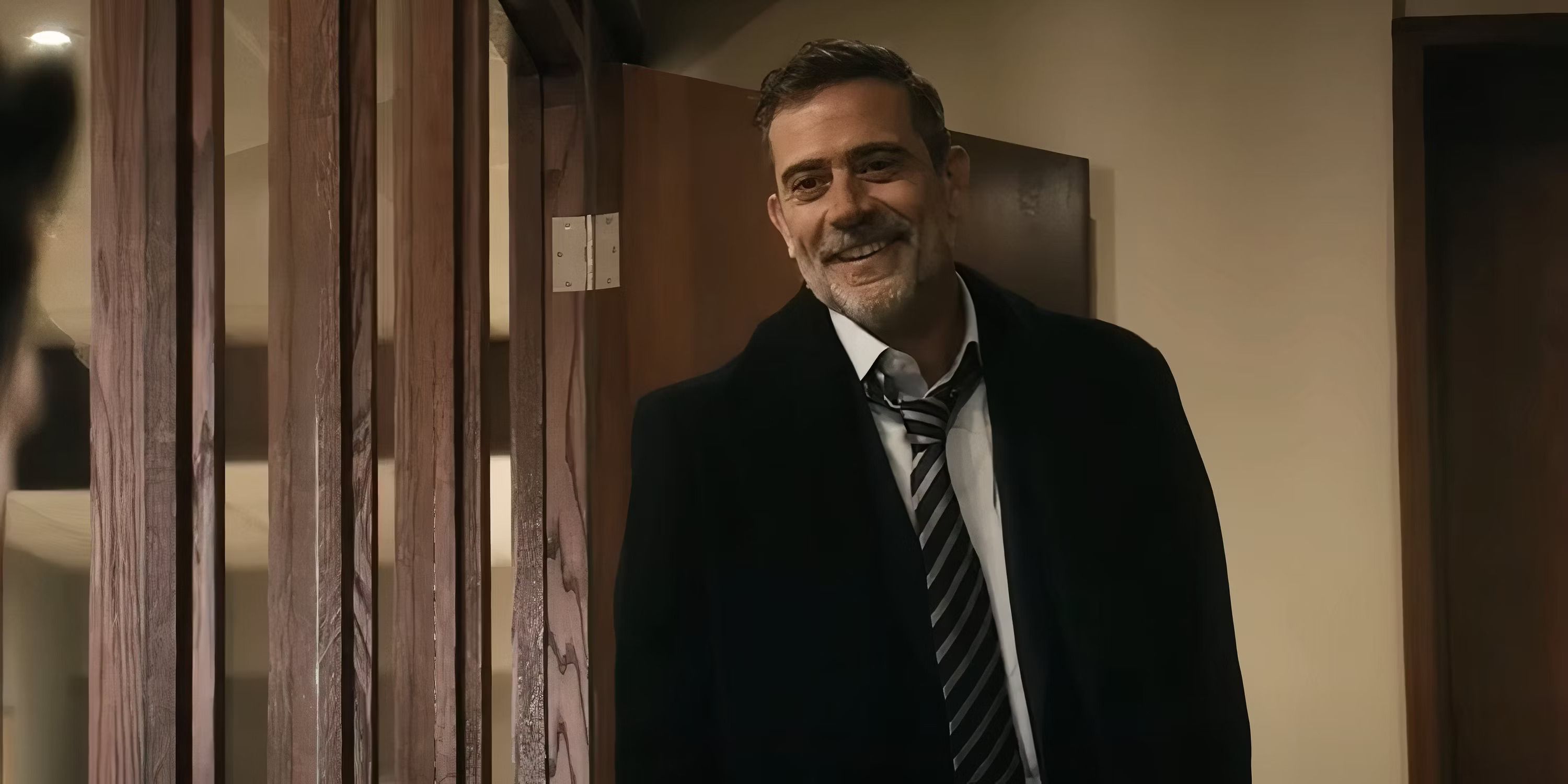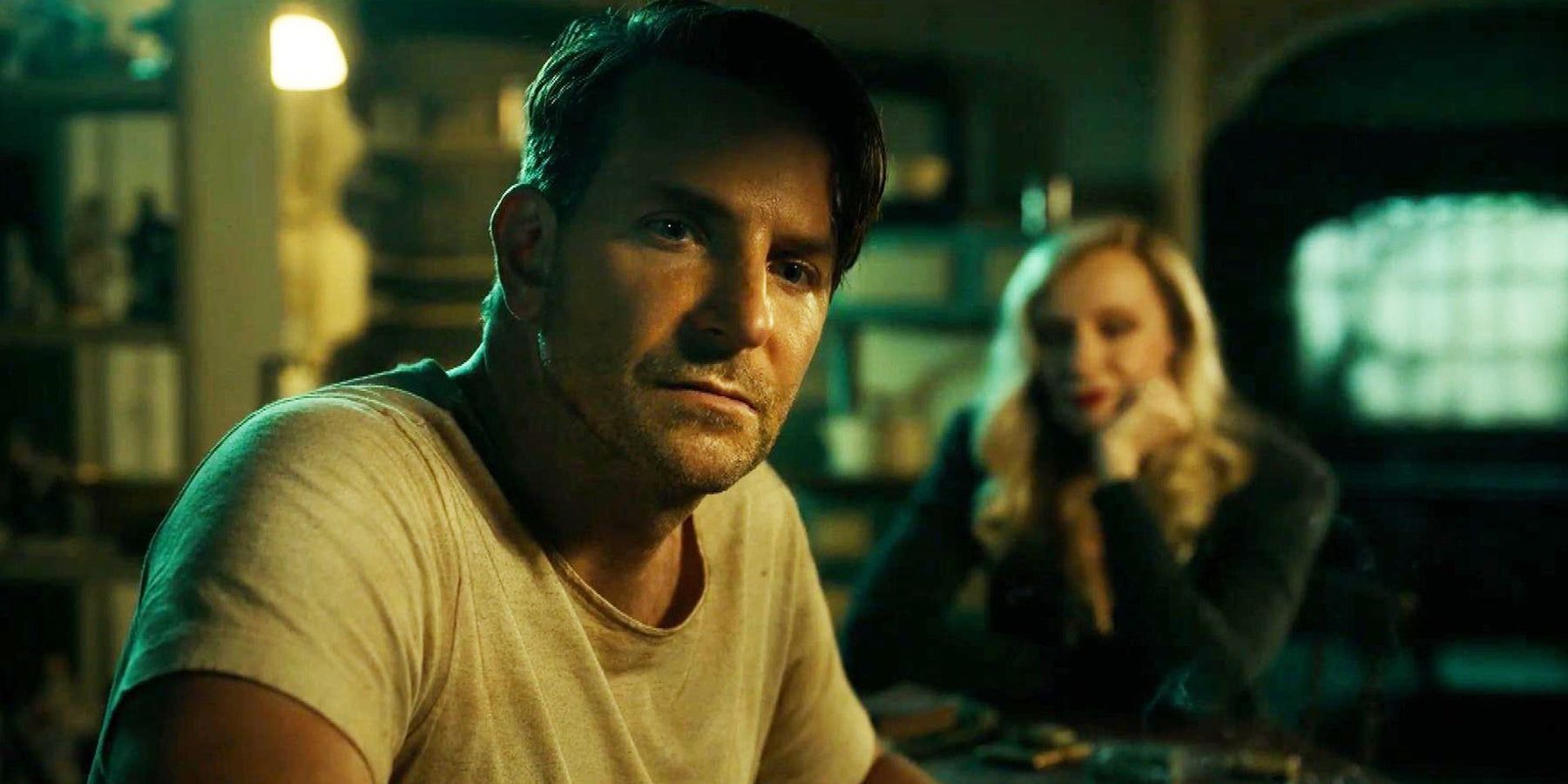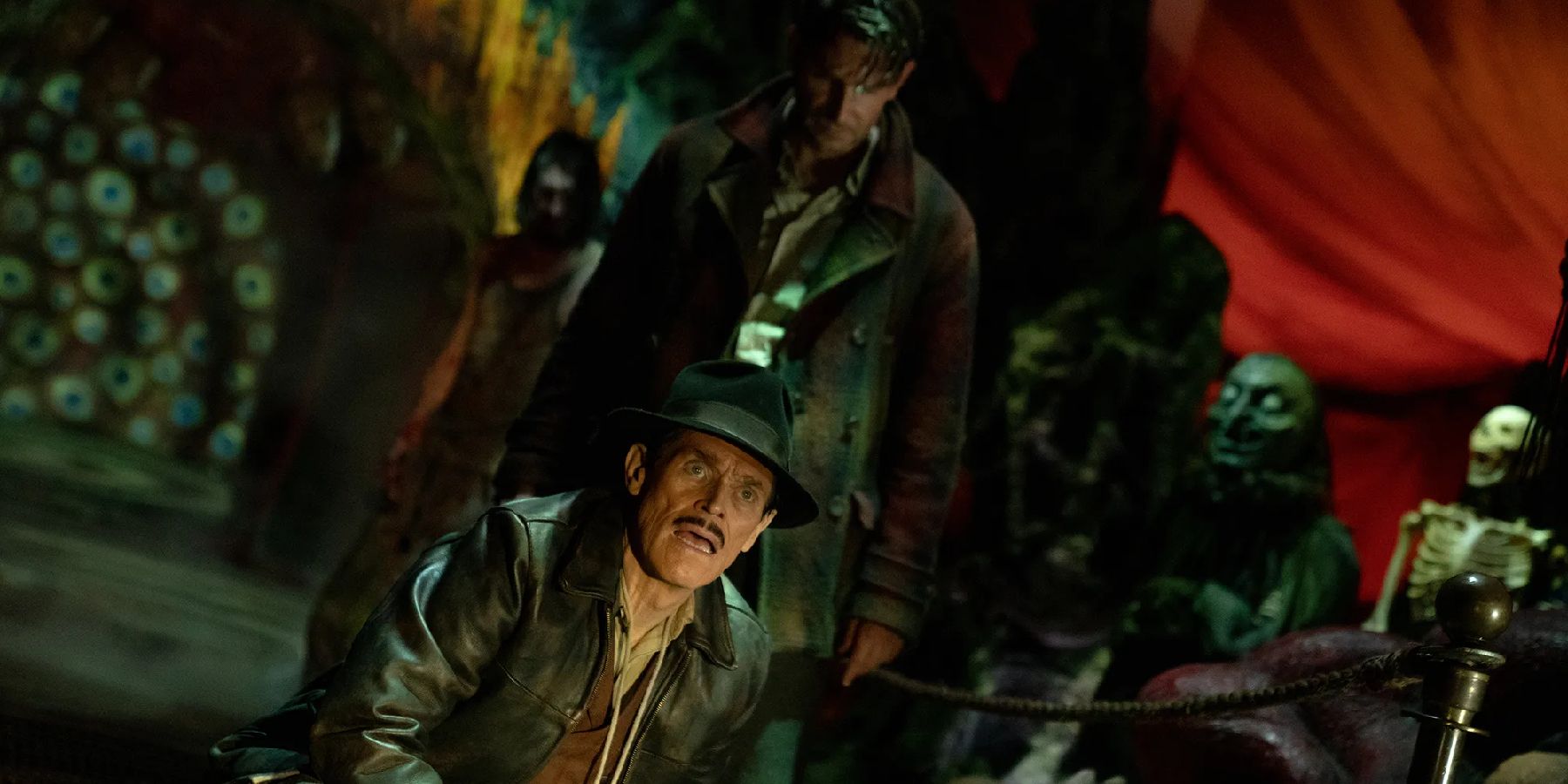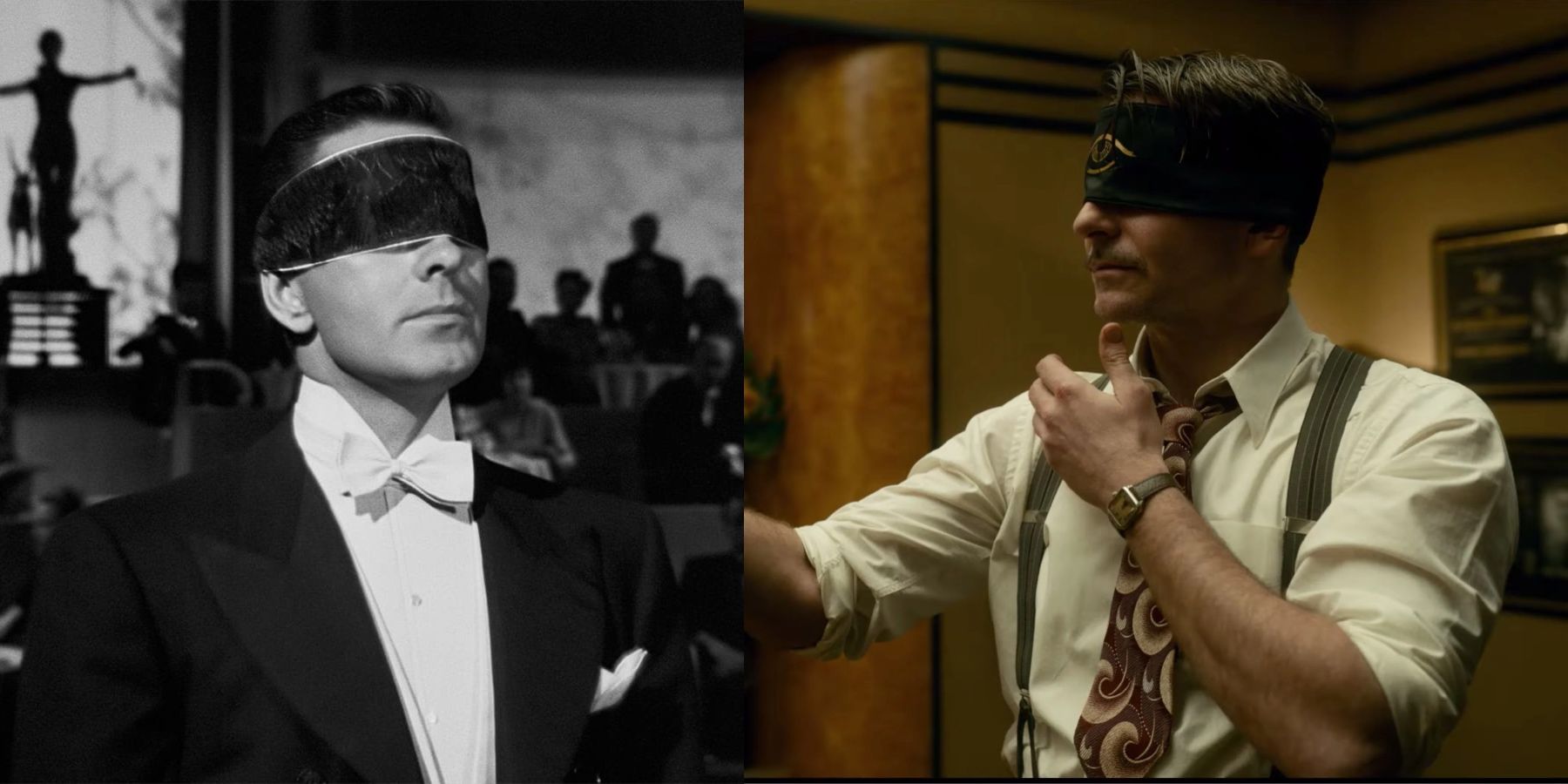Nightmare Alley is a rare treat in modern cinema; an unrelentingly harsh noir thriller that borders on experiential cinema. Guillermo del Toro manages somehow to break new ground while adhering strenuously to his incredible standards of style and presentation.
The film is based on the 1946 novel of the same name by William Lindsay Gresham, which has been adapted to film once before in 1947. Del Toro's interest in adapting the novel is multi-faceted; granting him a chance to work in a semi-grounded noir without any supernatural elements, while also indulging the director's love of the seedy "Circus Freak" community.
Guillermo Del Toro is a fascinating director with a fiercely devoted fanbase. Those devoted fans, and even casual admirers, would be well-advised to take in this film immediately. Coming on the heels of his most well-regarded film, 2017's award-winning masterpiece The Shape of Water, Nightmare Alley does not reach those dizzying heights. This is not his best film, but it is still excellent on very different merits. Scholars of the director's work can identify the hallmarks and will find most of them present in some form, including many of his favorite returning performers. Comparing it against the rest of his canon is almost unfair, though it is still unmistakably his creative vision elevating the project.
Nightmare Alley is the tale of Stanton Carlisle, a charismatic grifter who stumbles from a questionable past into a steady gig at a traveling carnival. Stan gains the favor of an alluring mentalist and her washed-up husband, and learns the tools of their trade, discovering an uncanny knack for deception and insight. Ceaselessly ambitious, Stan crafts a new act alongside a fellow performer and makes his way into the higher echelon of entertainment before he invents an even more cunning gambit. The story takes the viewer from the lowest rung of carnival sideshow to the highest lap of luxury as Stan sacrifices more and more of his humanity for fame and fortune. It's a classical Faustian morality play, constantly uncovering a new low, always unearthing the worst humanity has to offer. The character's journey is as gripping as it is grim, made even more powerful by the film's stellar casting.
Bradley Cooper takes the lead in one of the best performances of his career. Cooper disappears into this character, able to flex his skill in a massive variety of situations, including some excellent silent work. The film's crew of carnies are a dynamic community, supporting one another and speaking with charming internal slang. Ron Perlman plays an intimidating strongman, David Strathairn portrays a once-skilled drunk, Willem Dafoe shines as the crew's charismatic barker, but Hereditary star Toni Collette steals the show in her tragically brief role. Rooney Mara's role as Stan's eager partner turned long-suffering wife is touching and unsettling. Cate Blanchett seems to glide in from a classic pulp noir, bringing a classic femme fatale performance that is powerful. Aside from a couple of questionably re-recorded lines, every actor in this film is outstanding.
The primary draw of this film is its intricate sensory design. Del Toro has always been a master of haunting imagery, and this film's Depression-era period setting allows him to flex that talent. The carnival animatronics move with the unsettling shudder of shambling monsters, the luxurious parties of the second act evoke Gatsby and every new architectural masterwork is a feast for the eyes. The visuals are absolutely incredible, but an underrated aspect of the film's atmosphere is its stunning sound design. Countless tiny details are pushed to the front of the mind by subtle audio cues and the film's score weighs heavily on the soul. This film benefits enormously from an in-theater viewing, both for the visual splendor of the screen and the sonic experience of surround sound.
The biggest weak point of the film is its runtime. At 150 minutes, it is a substantial commitment, though almost impressive when compared to the novel. The pacing never quite grounds to a halt, but a few too many scenes were spared the cutting room floor. The writing, by del Toro and Kim Morgan is efficient and clever, but occasionally lays on the foreshadowing a bit too thick. Rewatching this film will likely hold new secrets the first couple times, but its length makes it tough to revisit with any regularity. Hardcore fans of the novel or the previous film will find a number of changes, but it's a matter of opinion whether they help or hurt the overall narrative. Lastly, the aforementioned Toni Collette as Zeena provides a moving performance whose role could've been better utilized. She's a more important character in the novel than in the film, and though obviously some things would be cut to streamline the experience, but she really leaves the audience wanting more.
Nightmare Alley is not a perfect film, but it is an experience that dominates the imagination with brilliant presentation, stellar performances, and Guillermo del Toro's signature style. Come one, come all, because this film's horror is man, not beast.
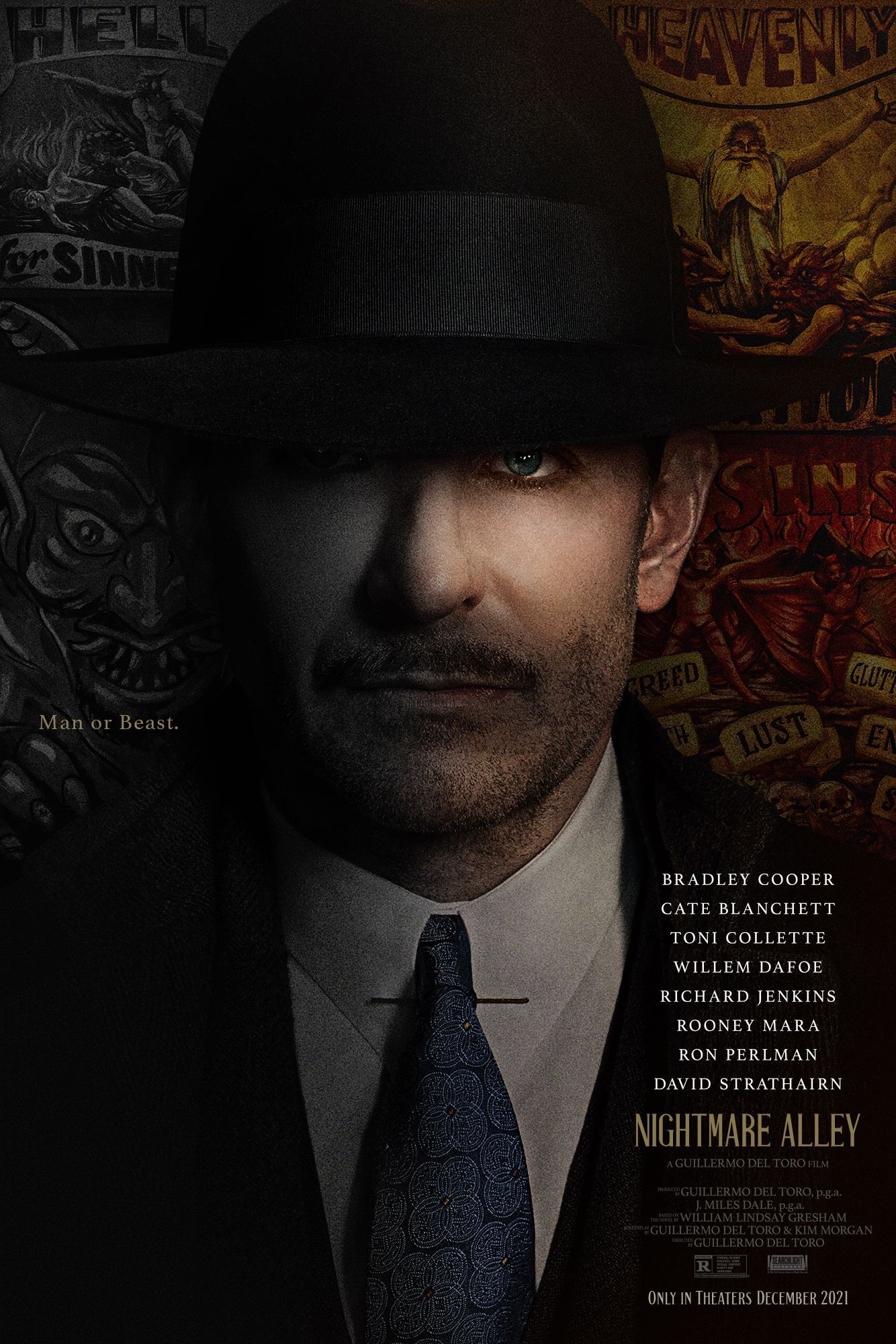
Nightmare Alley
Based on the 1946 novel of the same name, Nightmare Alley follows drifter Stan Carlisle (Bradley Cooper) as he joins a carnival in order to learn the art of grifting. Addicted to the thrills and the potential for personal gain, Stan takes his show on the road accompanied by fellow carnival worker Molly (Rooney Mara), where he makes a living as a false medium and mentalist. Stan is soon drawn into a much darker web of opportunity that sees him risk it all for one big score.

